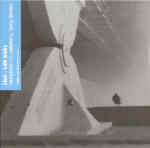This excellently conceived and beautifully performed disc should earn Liszt’s enigmatic late works many new friends. Arranged, orchestrated, and conducted by György Selmeczi, the program is framed by two Hungarian dances–Csárdás obstiné and Csárdás macabre–that surround the Four Forgotten Waltzes and the Hungarian Historical Portraits. Selmeczi’s orchestrations do wonders for the maddeningly repetitious first Csárdás and make those few moments when the Waltzes break out into sustained passages of lyricism all the more moving. He also manages the task of making the Hungarian Historical Portraits both interesting and far better differentiated than they sound at the keyboard, with nary a trace of Lisztian bombast at the end. The contrast between the four pieces in waltz tempo and the Portraits, which are essentially marches, also bears witness to the intelligent planning that characterizes everything about this release.
Selmeczi’s orchestration, for large chamber orchestra, includes only instruments that Liszt most likely would have used himself. Aside from strings and modest woodwind and brass, the percussion is basically limited to snare drum, triangle, and glockenspiel, and Selmeczi takes great pains to preserve the music’s fundamental austerity while enhancing its range of color. Aided by some really excellent playing by the Camerata Transsylvanica, this must be counted one of the more sensitive and successful orchestral arrangements in many a moon. The sonics, a little on the dry side but very clear, allow you to hear every detail, opening out well at the climaxes. Highly recommended on all counts.
































